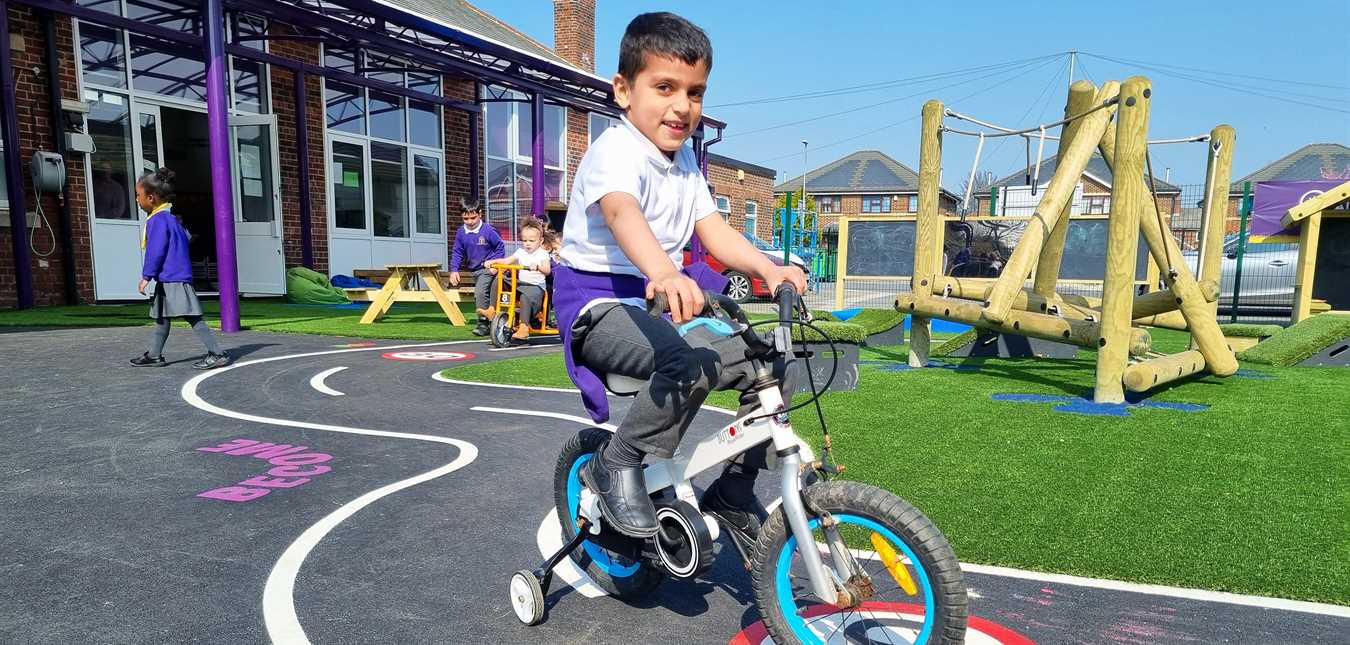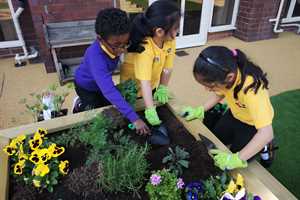
Outdoor Learning and Play
Essential Tips for Road Safety Week: Keeping Our Streets Safe
Every year, thousands of schools, organisations and communities get involved to share important road safety messages. Road Safety Week runs from November 17 to November 23, 2024.
Road Safety is a great subject to engage young people. All children and young people use roads and may have experienced road danger.
What is Road Safety Week?
Road Safety Week is a nationwide annual road safety campaign which helps to raise awareness about road safety issues.
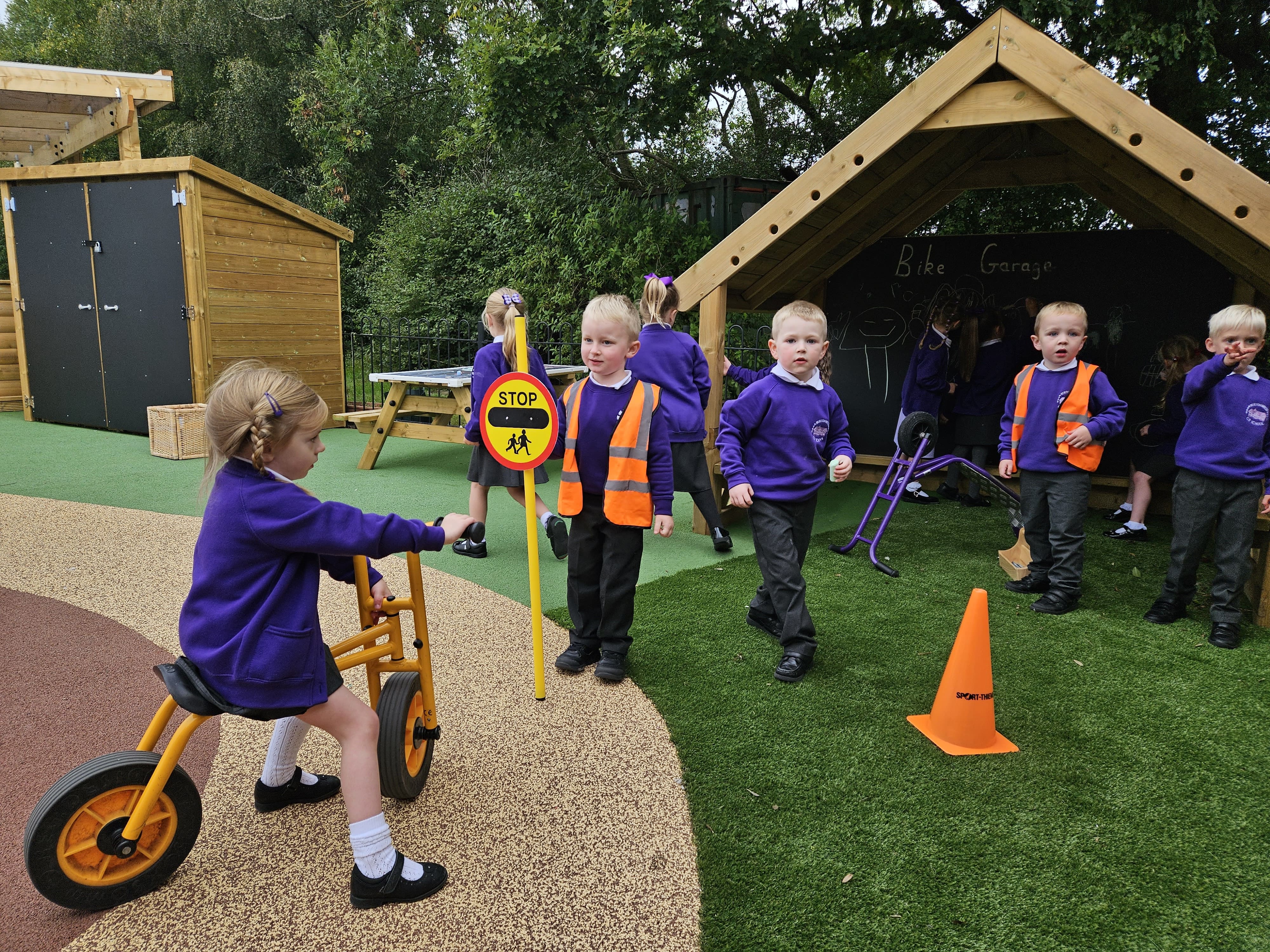
Schools can focus on key areas of road safety such as how to cross roads safely, the Green Cross Code, the dangers of listening to music, talking or texting when crossing, knowledge of the Highway Code and cycling safety tips.
When did Road Safety Week Begin?
Since 1995, the charity Brake has been working hard to stop the tragedy of road deaths and life changing injuries in road crashes, making streets safe and healthy places for all.
Why is Road Safety Week Important?
The Department for Transport stated, on their Facts on Child Casualties pdf, that children under the age of 16 are some of the most vulnerable road users, in particular child pedestrians which account for the majority of child casualties across all road user types.
In contrast to older pedestrians, child pedestrians are not as experienced and well educated about using the road, leaving them vulnerable to injuries and accidents.
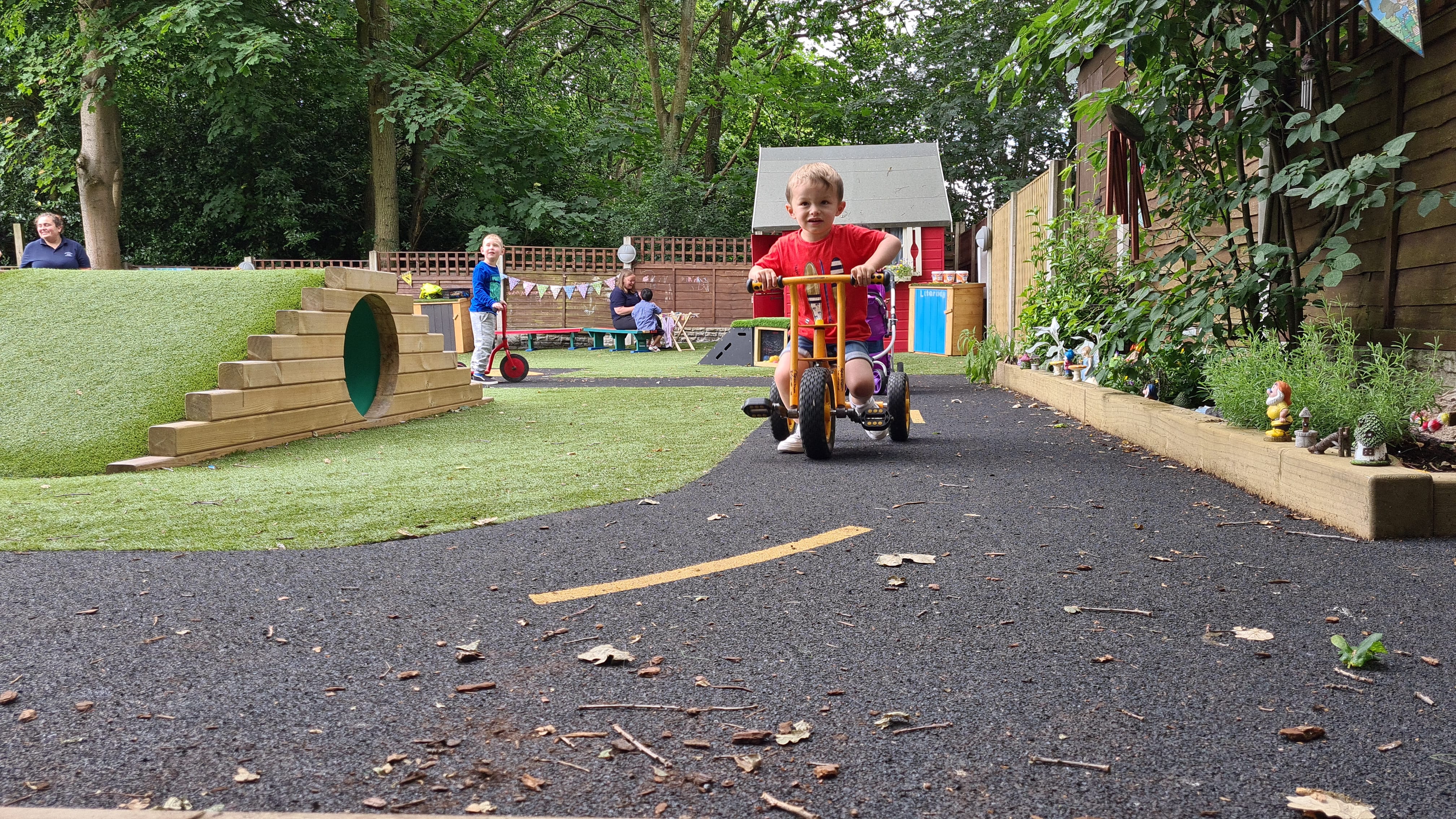
Brake figures from 2021 show that 512 children aged 7 or younger were killed or suffered serious injury on UK roads. That's one young child every 17 hours. That is the equivalent of a whole class of young children (27) being killed or seriously injured every 19 days. This must stop.
Teaching our children basic road safety through fun activities is vitally important as it allows them to make positive choices that may save their lives.
How Your School Can Celebrate Road Safety Week
During Road Safety Week, road safety lessons can be taught in interesting and engaging ways. Schools may also consider how pupils such as school council members can take action to create 'safe streets' in and around the school community.
1. Bring Road Safety To The Playground
Having Road Play Markings in the playground allows children to develop an understanding of the world around them. Children can physically use their own vehicles or toy cars to travel safely around a track taking note of road signs such as Stop and Give Way, traffic lights and zebra crossings.
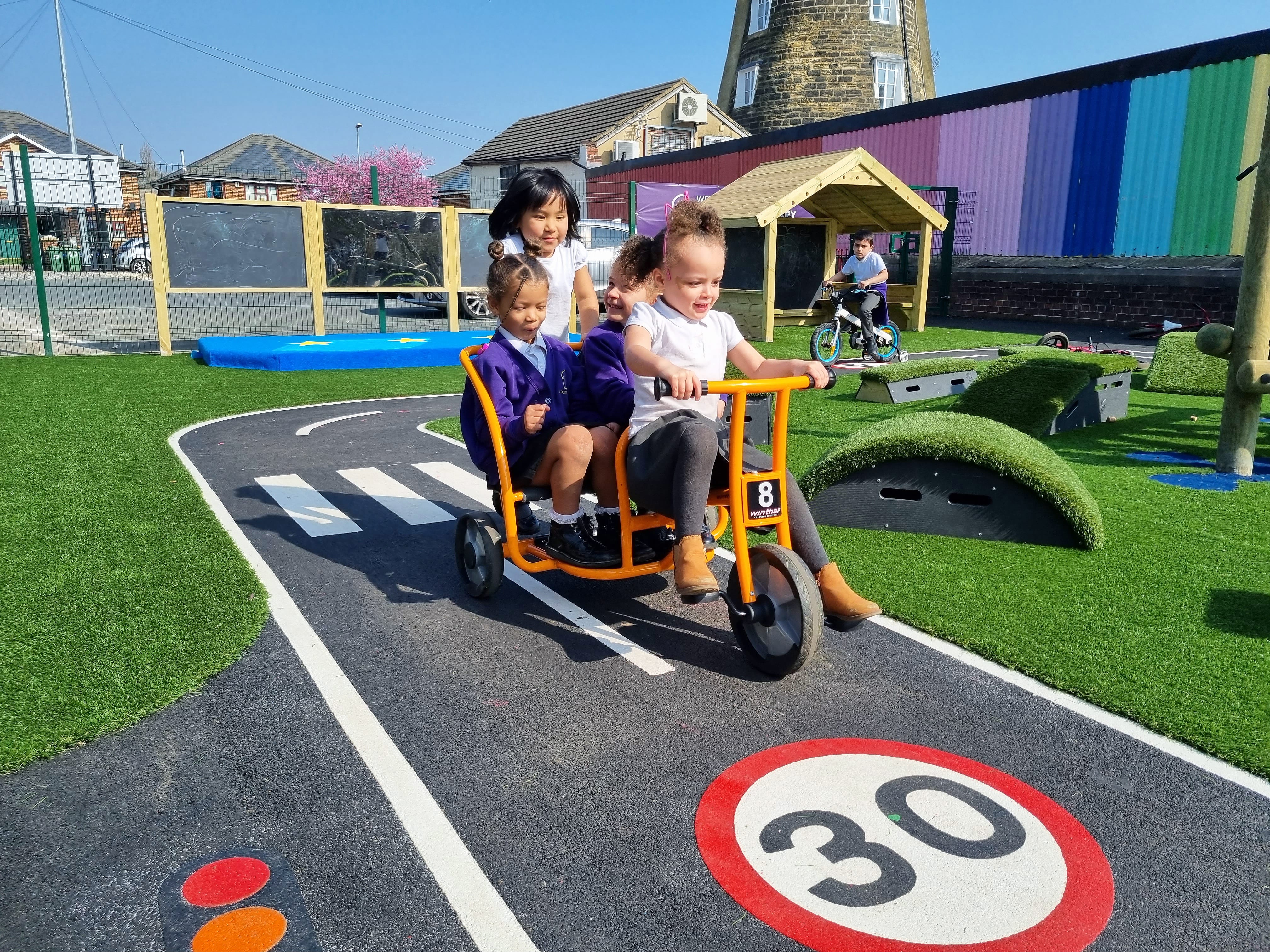
Children could practise finding a safe space to cross their playground roadway and adults can stress the importance of holding hands with a grown-up when crossing.
2. Incorporate Road Safety into Lessons
In English/PSHE lessons children could be asked to read and discuss statements about fictional characters such as: 'Drives faster than the speed limit', 'Always wears a seatbelt when travelling by car', 'Parks on the lines outside school', 'Drives slowly in places where people live.'
Older classes could research and debate a road safety issue such as: 'The maximum speed limit in towns should be 20mph.' 'All children should be required by law to learn about road safety in schools.'
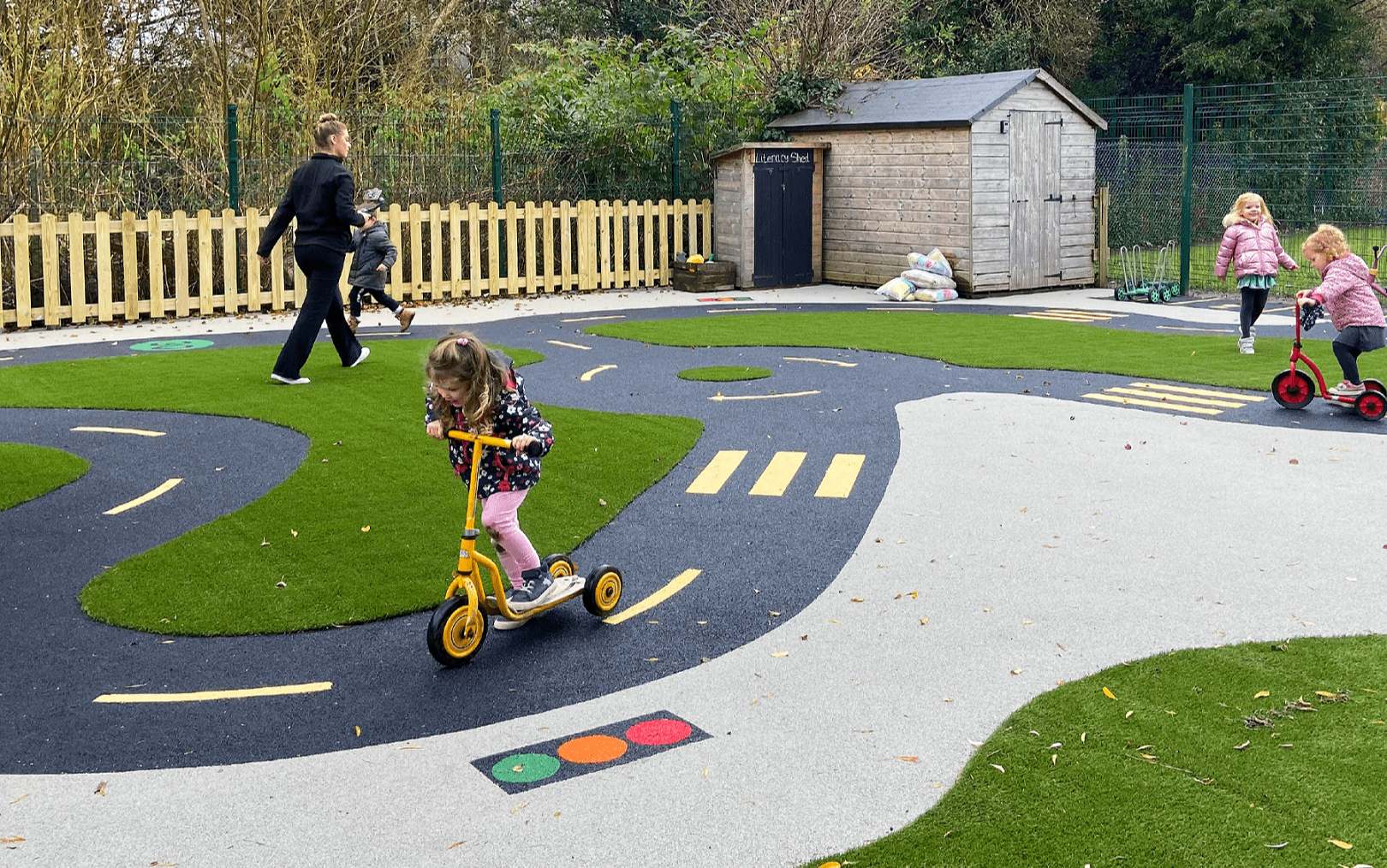
During Design and Technology/English lessons groups of children could be asked to create a new, safe town with streets that are designed for people not for traffic.
Children's ideas could be drawn or modelled on large sheets of paper and may include: safe footpaths and cycle paths, pedestrianised areas closed to traffic, safe places to play such as parks, safe crossing places, slow traffic, bike parks and good access to public transport.
As part of Maths lessons, older pupils could carry out surveys, counting vehicles who stop outside school gates, on double yellow or zigzag lines, in the middle of the road or on the kerb during the school run. This information could be highlighted in a school newsletter.
3. Practical Experiences and Campaigning
Learning about road safety can be most effective when combining classroom based learning with practical experiences and campaigning.
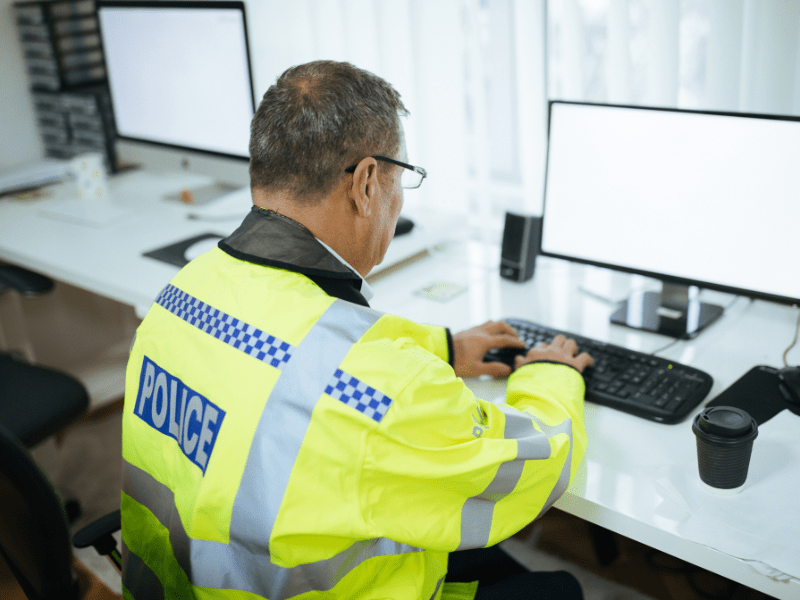
- Road Safety Officers from local authorities can visit schools to run pedestrian and cycling training.
- Emergency Services Professionals can give talks in assemblies or supervise and deliver practical, experience-based lessons or discussions.
- Local companies or volunteers may help to promote a campaign led by the children e.g. by providing a space to display banners/posters.
4. Educate Parents and Other Stakeholders
- Children could create postcards detailing key road safety messages they have learnt. Postcards can be taken home to share with parents/carers.
- Posters with bold, eye-catching designs could be created by pupils and displayed in key places where members of the community gather.
- Students could create and film a news report to raise awareness about road safety in their community. Pupils can carry out their own research, interview various people and film their own content. The video could share important facts with the school community and also parents.
- Classes could write to their local MP or police force to make them aware of their activities and to see if they can lend a hand.
- If your school is on Facebook/Twitter sharing what your school is doing with the school community is a good way to spread road safety messages.
- Schools could hold a 'Be Bright Be Seen' Day where children are given the chance to come to school wearing bright clothing. They can decorate their school uniforms, bikes, scooters, shoes, rucksacks or helmets and could enter a competition for the best outfit!
Protect Your Students by Taking Part in Road Safety Week!
It is vitally important that we teach children about key road safety issues. Together we can make our communities safer and nicer and stop needless tragedies before they happen.
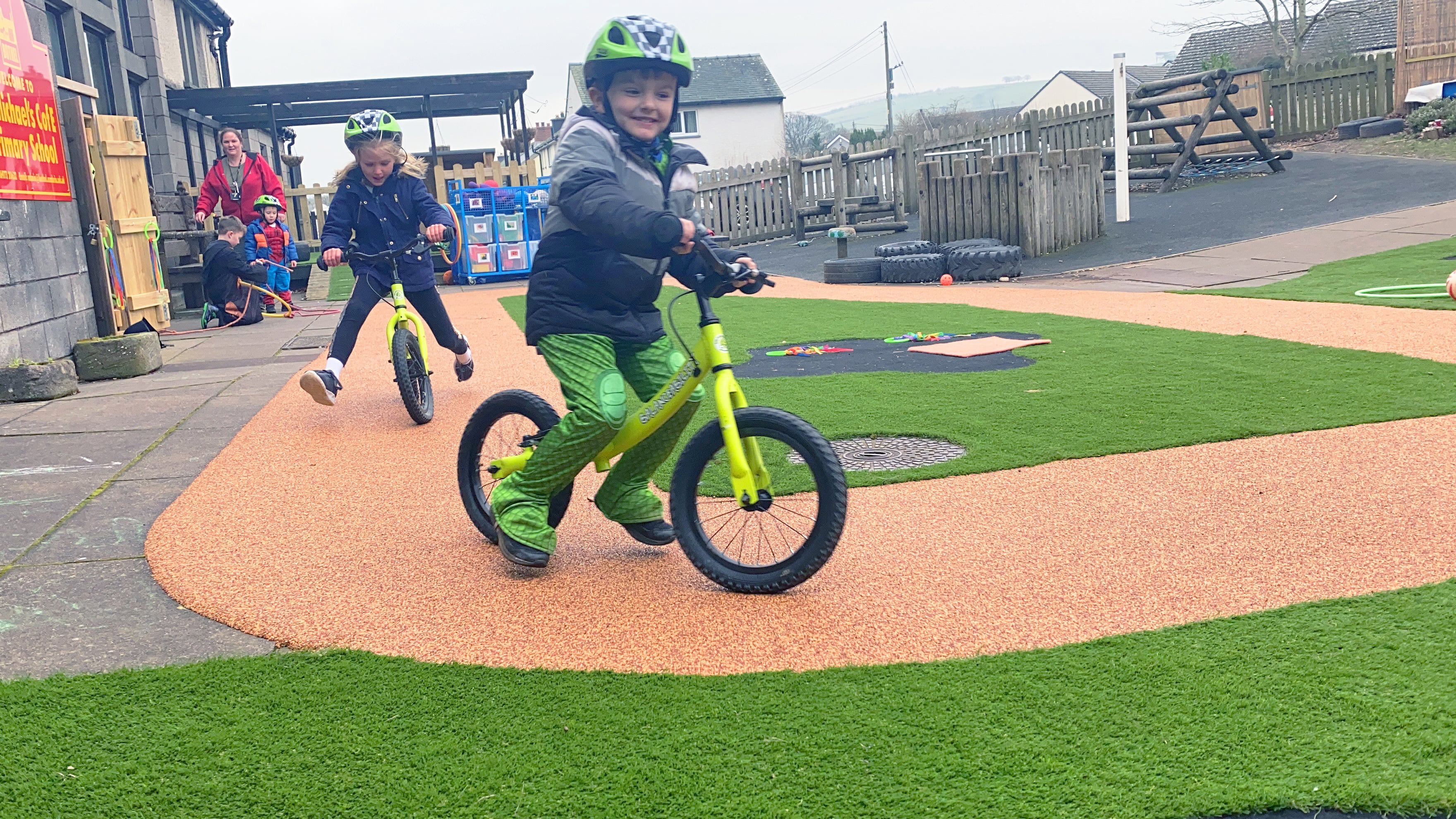
Why not help to raise awareness about road safety with some creative activities and events during Road Safety Week 2024. Together we can Save Lives.



